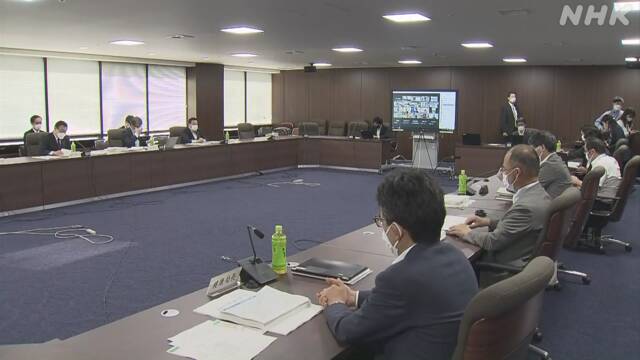An expert meeting of the Ministry of Health, Labor and Welfare was held to advise on measures against the new coronavirus, and while the number of infected people nationwide continues to decline, the effects of immunity obtained by vaccination etc. will decline over time. Therefore, he pointed out that there is concern that the number of infected people will increase around the summer.
Expert meetings have continued to decline nationwide regarding the current infection status, and have fallen below the peak of the fifth wave last summer in metropolitan areas such as the Tokyo metropolitan area, Osaka prefecture, and Aichi prefecture, as well as in some local cities. In addition, Okinawa Prefecture, which has the highest number of infected people per capita in Japan, has been on a downward trend for the past three weeks.
By age group, the number of infected people decreased in all age groups, and the number of people who died, which had been flat until now, began to decrease.
Regarding the future infection situation, it is expected that the trend of decrease will continue in the metropolitan areas in the short term, while the effect of immunity obtained by the third vaccination and the previous infection will gradually decrease. From next month onward, there will be more opportunities for contact with people due to the influence of summer vacation, and there is a possibility that it will be replaced with a new strain of Omicron strain, so there is concern that the number of infected people will increase around summer. He pointed out that it is necessary to pay close attention to the impact on the medical system.
In addition, regarding border measures that are being mitigated, we will continue to require foreign visitors to undergo pre-departure tests before leaving Japan, while those who test positive when entering Japan will be mutated. He said it was necessary to continue genetic analysis of the virus to monitor the status of the virus.
According to the expert meeting, the number of infected people is still higher than the peak of last summer in more than half of the country, mainly in local cities. He called for refraining from going out if it was bad, wearing a non-woven mask properly, washing hands, and thoroughly implementing basic infection control measures such as avoiding even one denseness.
In addition, in order to prevent the aggravation of the elderly, long-term care and welfare facilities were requested to proceed with the fourth vaccination of residents.
Minister of Health, Labor and Welfare Goto "The downward trend continues nationwide"
At an expert meeting, Minister of Health, Labor and Welfare Goto said, "The average number of newly infected people nationwide is 0.70 compared to last week, and it continues to decrease in almost all regions nationwide. On average, the weekly average is below the peak of last summer in some local cities, in addition to metropolitan areas and metropolitan areas such as Osaka Prefecture. "
He added, "Although the situation in Okinawa has been the highest in Japan, it has been decreasing for the last three weeks. We will continue to pay close attention to the infection situation in the future."
Number of newly infected people per week decreased in 46 prefectures
According to the materials presented at the expert meeting of the Ministry of Health, Labor and Welfare, the number of newly infected people in the week up to the 7th has continued to decrease by 0.70 times compared to the previous week.
In the metropolitan area, 1 metropolitan area and 3 prefectures are 0.72 times in Tokyo, 0.68 times in Kanagawa prefecture, 0.67 times in Chiba prefecture, 0.63 times in Saitama prefecture
, 0.71 times in Osaka prefecture in Kansai, 0.68 times in Hyogo prefecture, and 0.68 times in Kyoto prefecture. It has decreased by
0.58 times,
0.72 times in Aichi prefecture, 0.80 times in Gifu prefecture, and 0.69 times in Mie prefecture in Tokai.
In addition, Hokkaido has decreased by 0.65 times, Miyagi prefecture by 0.71 times, Hiroshima prefecture by 0.64 times, Fukuoka prefecture by 0.65 times, and Okinawa prefecture, which has the highest number of infected people per capita, by 0.88 times.
It has decreased in 46 prefectures, and the number of newly infected people has increased 1.01 times from the previous week only in Tokushima prefecture.
Although the number of infected people per 100,000 population in the last week has been declining, Okinawa Prefecture has the highest number of people in Japan at 590.20.
Kagoshima prefecture has 170.94 people, Miyazaki prefecture has 152.58 people, Nagasaki prefecture has 152.40 people, Kumamoto prefecture has 140.48 people, Fukui prefecture has 132.88 people, Osaka prefecture has 113.94 people, and Tokyo has 94.88 people. Then it was 96.76 and less than 100.

